Apple iPhone 17 Lineup Brings Upgraded Cameras, All-New Chassis, And The Ultra-Thin Air
While most flagship phone upgrades are incremental at best across many vendors, this time around Apple actually effected some meaningful changes, and we'll go over those that are common to all handsets first. All iPhone 17s now carry a 120 Hz, 460-PPI display that can reach an eye-searing 3,000 nits of brightness in outdoors areas, a welcome upgrade from the 60 Hz screen ensconced in baseline iPhone models until now. The baseline storage has increased from 128 GB to 256 GB, another quite significant improvement considering the prices for the new handsets are the same as last year's.
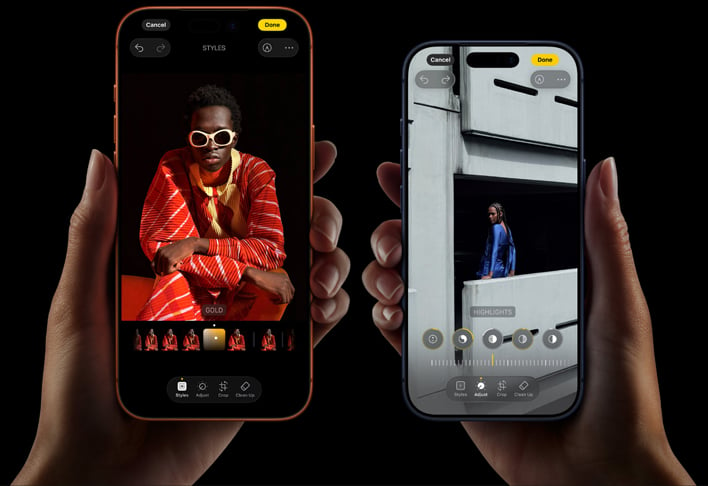
The new display also has variable refresh rate support, meaning it makes for super-smooth games, it matches the refresh rate of videos and movies, and can drop down to 1 Hz to conserve power. That last bit makes always-on display functionality much more useful, given that it will consume much less battery than before. The newest iPhones are also covered in what Apple calls its Ceramic Shield 2 that is claimed to offer 3x better scratch resistance than its predecessor, along with a seven-layer anti-reflection coating. The back of the handsets also saw improvements, as they all use now use a newfangled ceramic coating that should be more resistant than the previous glass.
Apple's presentation also repeatedly pointed out the benefits of the new selfie cameras, which are now all 18MP with 1:1 sensors -- Apple calls it "Center Stage". The square aspect ratio of the sensor lets users take focused and clean selfies regardless of hand orientation, and the software will even rotate the image automatically to keep the person in focus, as well as expand the field of view if more people join in. These features are coupled with image stabilization and 4K HDR recording, as well as Dual Capture that records both front and rear cameras simultaneously.
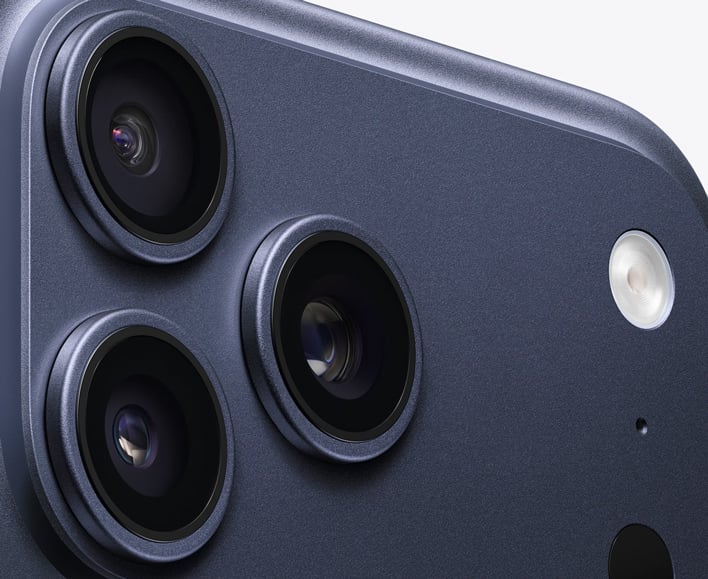
The rear cameras also saw significant improvements. Although the number, type, and high-end features of the cameras vary among the lineup, the common theme is that they're 48MP Fusion models that combine a 48MP with a 12MP sensor to produce high-quality 24MP images by default. There's Dolby Vision 4K60 HDR video recording on tap, as well.
New Apple Wireless Chip And Modem
Another area where Apple has made strides is in designing its custom radio chip, the N1, eschewing the Broadcom offerings in previous iPhones. The N1 offers Wi-Fi 7, Bluetooth 6, and the Thread IoT protocol. The company didn't go into much detail, but we're guessing that besides saving on cost, the N1 is likely more power-efficient, given it's a fully bespoke design. Last but not least, the batteries on all models support faster wired charging at a baseline of 50% in 20 minutes, as well as faster wireless charging.Now let's take a look at each model in sequence, kicking things off with the standard iPhone 17. This handset includes Main and Ultra-wide Fusion cameras, the former with 2x "optical-quality" zoom (meaning it's AI-enhanced), and the latter having the ability to do macro photography. The display measures 6.3" across, and as remarked before, the baseline storage is now 256 GB. Apple claims this handset's battery ought to last it through 30 hours of video playback. An eSIM-only version will be available in North America, Mexico, Japan, and parts of the Middle East. As usual, Cupertino didn't mention the amount of RAM or the exact battery size, but the phone sleuths at GSMArena pin those at 8 GB and 3692 mAh, respectively.
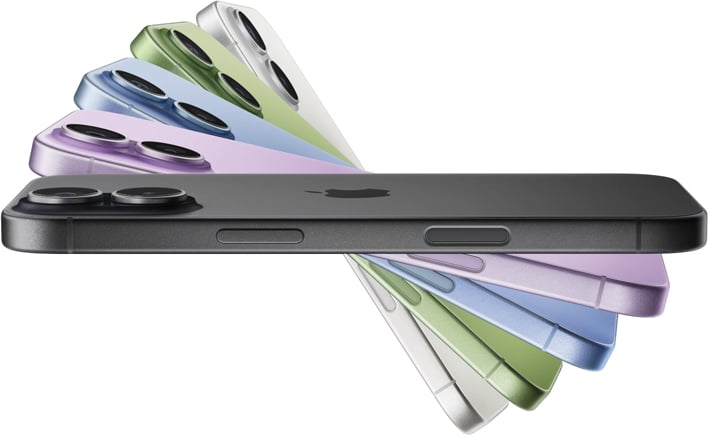
The minty-fresh A19 SoC inside is manufactured on a 3-nm process and carries a six-core CPU setup (2 performance, 4 efficiency), a 16-core neural network engine, and a five-core GPU with hardware raytracing and mesh shading support. Apple says that there's additional memory bandwidth on tap, too, and that overall, the chip should be 20% faster than the one inside the iPhone 16. The company specifically called out the A19 family's gaming chops, saying that the new GPU coupled with the new NN core enable smooth raytracing-enabled graphics. The iPhone 17 goes for $799 with 256 GB or $999 for 512 GB, and is available in five colors.
The iPhone 17 Air Is The Thinnest iPhone Ever
The iPhone 17 Air is definitely the most eye-catching phone in the lineup, with its svelte titanium frame that's a mere 5.6 mm thin throughout most of the handset. Given its petite dimensions, this model only carries the one 48MP Fusion main camera that can simulate four lenses, from 28 mm to 50 mm. This model steps up to the A19 Pro SoC, a chip that Apple claims offers improved single-threaded performance over the standard one (probably by way of higher clocks), and an L3 cache that's 50% bigger than the previous revision. Each of the five GPU cores in this chip each has its own NN accelerator. The Air also carries Apple's own C1X 5G modem, another upgrade from the C1 revision that should be twice as fast.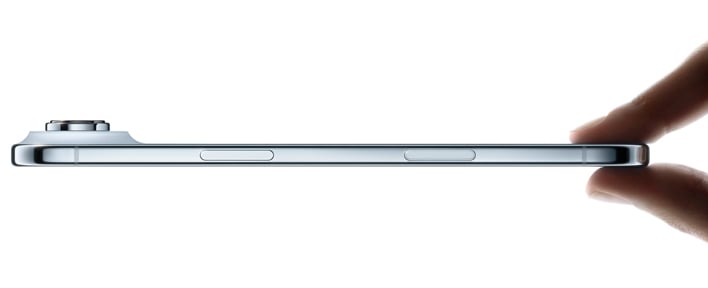
Finally, the proverbial Big Kahunas, the iPhone 17 Pro and Pro Max. The Pro is fitted with a 6.3" display with Dolby Vision, and the A19 Pro's GPU gets a boost to a six-core model. The camera system in this handset is the real star, though, with a total of three 48MP Fusion cameras: main, ultra-wide, and telephoto. The combination lets shooters take pictures at up to 8x optical-like zoom and enjoy lens simulations from 28 mm to 200 mm, for a total of 8 "lenses" available. Digital zoom is also CSI-enhanced at up to 40x. Those are all impressive figures, but professional videographers also enjoy support for ProRes RAW capture and genlock multiple-camera synchronization. Naturally, there's macro photography by way of the ultra-wide camera.
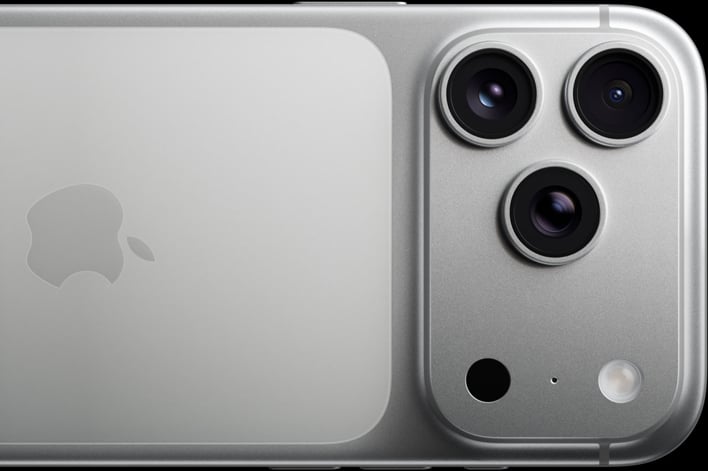
Apple also talked a lot about the iPhone 17 Pro's chassis. It's a unibody all-aluminum design that Cupertino calls a world first, machined out of a proprietary alloy. There's also a new thermal system with a vapor chamber that's laser-welded into the chassis. All told, Apple says this grants the iPhone 17 Pro 40% better sustained performance over the iPhone 16 Pro. As befits a "Pro" phone, the RAM amount is reportedly 12 GB. The battery size is supposedly 3988 mAh for the version with Nano-SIM, or 4252 mAh for the eSIM-only model. Apple says this should be good for 39 hours of video playback. This model will set you back $1,099 with 256 GB of storage, 512 GB for $1,299, and $1,499 for 1 TB.
As for the iPhone 17 Pro Max, the display size rises to 6.9" (with the same 460 PPI), and the battery dimension increases substantially to 4832 mAh in the standard nano SIM model, and a whopping 5088 mAh in the eSIM variation. Apple is asking $1,199 for the 256 GB version, $1,399 for 512 GB, $1,599 for 1 TB, and a nearly-round $1,999 for the all-new 2 TB variation.
New AirPods And Apple Watches Are Coming Too
Alongside the new family of iPhone 17s, Apple also announced new AirPods and a fresh series of Apple Watches.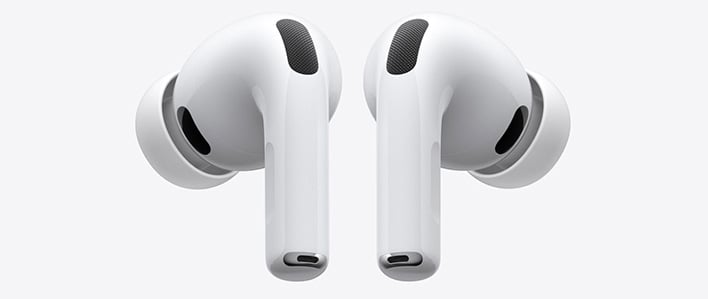
The upcoming AirPods Pro 3 build upon the success of the previous generations, by boosting battery life (up to 8 hours with ANC) and improving fitment, based on customer telemetry and 3D scans of thousands of ears. Apple has also added impressive new functionality, like live translation. In a demo, two people wearing the latest AirPods Pro 3 sat across a table from one another, speaking different languages, but were able to carry on a natural conversation due to the near real-time translation. Perhaps best of all, even with better battery life and new features, the AirPods Pro 3 will arrive at the same $249 MSRP of their predecessors.
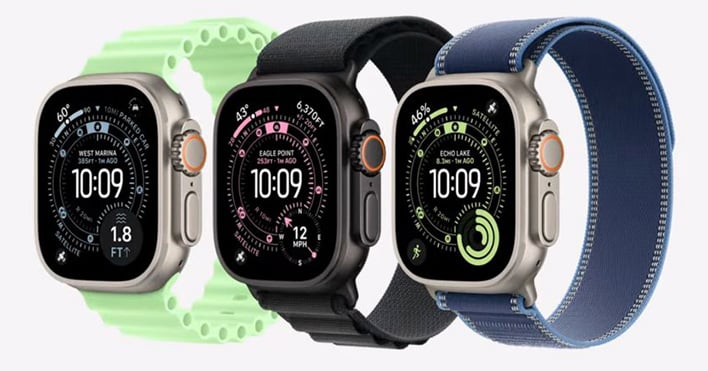
New Apple Watch Series 11, Watch SE and Watch Ultra 3 devices are also in-bound. The new Apple Watches have the same footprints as the previous generation, but feature many new colors, finishes and accessories. They’ll also feature upgraded sleep tracking and new hypertension (high blood pressure) sensing, along with upgrades screens. The Watch Ultra 3 in particular is getting a new OLED display, with wider viewing angles and increased brightness. Pricing for the new Apples watches is also unchanged from the previous generation, with the Watch SE starting at $249, the Watch Series 11 starting at $399, and the Watch Ultra 3 starting at $799.

